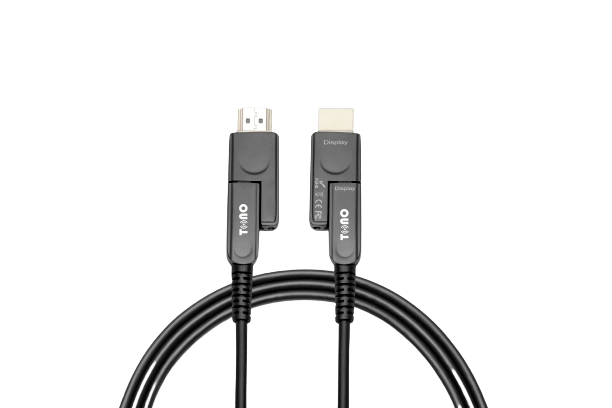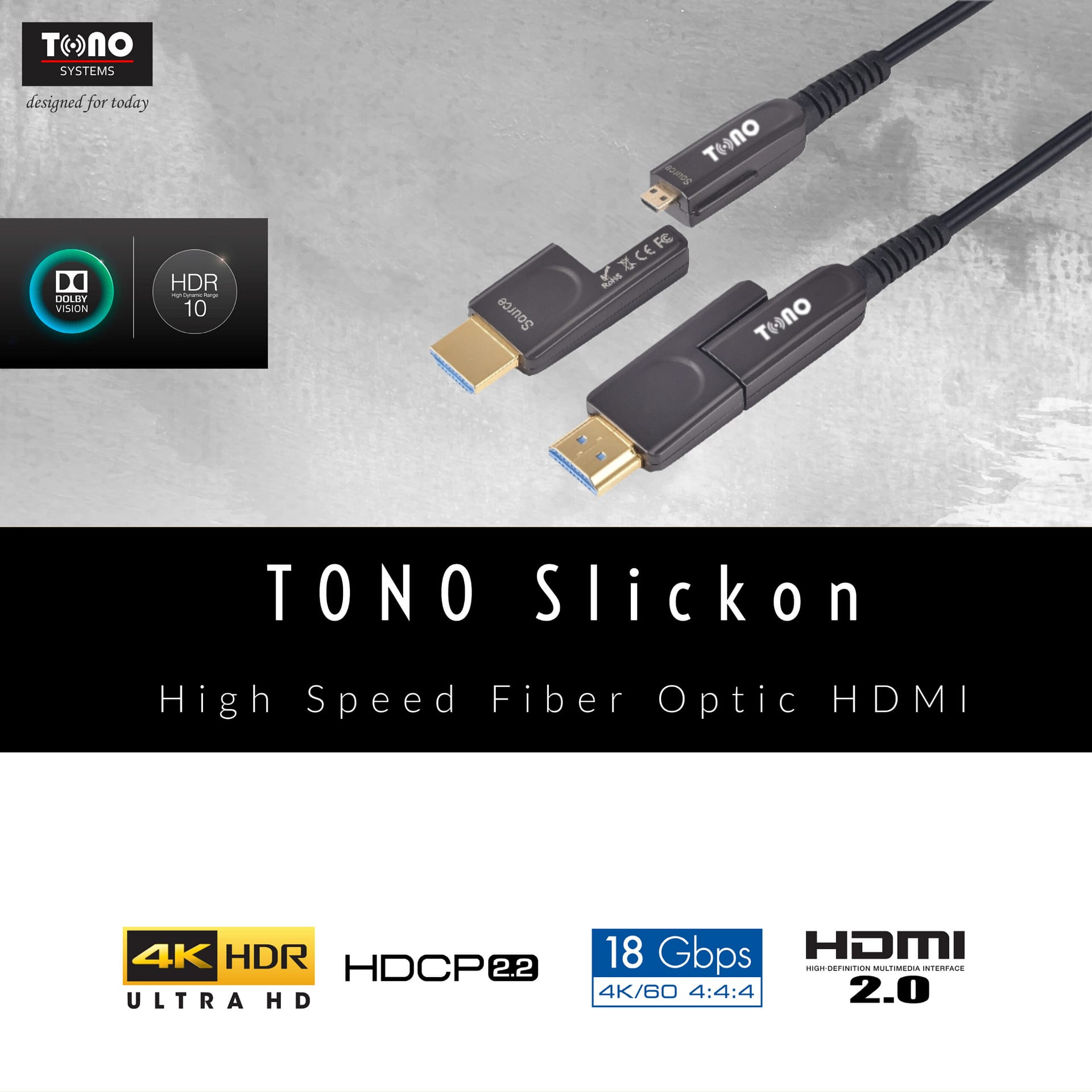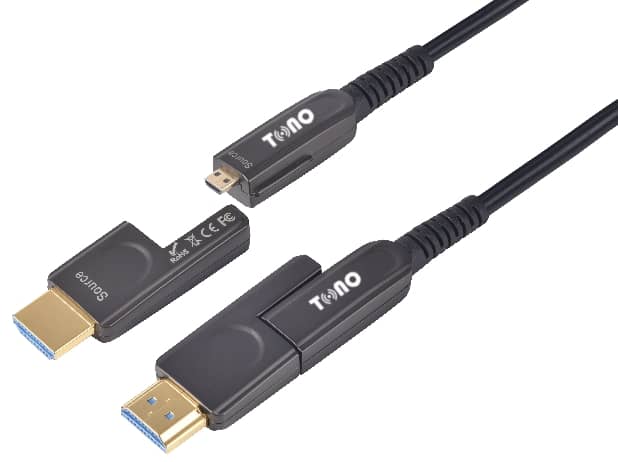
AV 01
November 22, 2021
Fisheye
January 10, 2022| Length | 10 meters, 15 meters |
|---|
Features
- 40% smaller in Width
- Bendable up to 6mm
- No Signal loss even after heavyweight load on top
- Future-ready with 4k signals up to 100 meters with HDMI2.0b
- 4:4:4/4:2:2/4:2:0.(8 bit for 4:4:4 and 10 bit for 4:2:0 color depth)
Product Information
- Quantity in Box: 1
FAQ
Frequently Asked Questions
Let’s begin with the basic differences between the two; optical cable helps transfer digital audio signals from one source to another while HDMI optical cable helps transfer digital audio signals as well as video data. Fiber optic HDMI cable can also transfer higher-resolution audio formats found on Blu-ray: Dolby TrueHD and DTS HD Master Audio. These formats cannot be passed through an optical cable.
Coming to the similarities, both of these cables are superior to analogue cables and can transfer multi-channel audio such as Dolby Digital. Both these cable are also budget-friendly.
However, as to which is better, its answer depends on what your needs are. If you need a cable only for audio, then the optical cable is ideal. But, if you want just a single cable for both audio and video to simplify hookups, then HDMI is the best choice.
While traditional HDMI cables were made using copper, modern HDMI cables are made using Fiber. To transmit signals, copper cables use electricity while fiber optic cables use lasers. As such, since laser (light) moves faster than electricity, fiber optic cable is a better option, as it offers faster audio and video signals.
Also, fiber optic HDMI cables are immune to electromagnetic interference (EMI) or radio frequency interference (RFI). This ensures that there is no signal loss, whatsoever, even over long-runs.
HDMI cables also have the unique ability to pass multi-channel audio and high-definition video over a single cable. The best part, they are the only cable that can carry 3D video signals from devices like 3D Blu-ray player or projector etc.
Yes, there is. There are four different types of HDMI cables, and the main difference between them is how much data each can carry.
- A Standard HDMI cable can support up to 720p or 1080i resolution at 30Hz.
- A High-Speed HDMI cable can support up to 4K resolution at 30Hz.
- A Premium High-Speed HDMI cable can support up to 4K@60Hz with high dynamic range (HDR).
- An Ultra High-Speed HDMI cable can support up to 10K@120Hz with HDR.
While there are a lot of options in the market, the major consideration when choosing the best HDMI Cable for 4k TV is to check the bandwidth (speed). For most 4k TV, a bandwidth of up to 18Gbps is fast enough for enhanced audio/video transmission. Likewise, as mentioned above, a fiber optic HDMI cable is a great option compared to regular copper-based HDMI cables. Lastly, check for the HDMI cable-length. Though the shorter cable-length is ideal, make sure that it is long enough for future needs.
For premium high-speed fiber optic HDMI, check out the Tono Rapid Optical Active 4k HDMI cable. This superior quality 4K optical cable offers faster signals and smooth & steady performance. It is a flexible cable that is easy to use and handle, which makes setting-up devices easier. Its Active Optical feature helps maintain powerful signal strength even over long distances. The best part, this HDMI cable is compatible with a variety of HDMI source devices, so it can be used for different purposes.
Download
Awards And Certificates
slide
Only logged in customers who have purchased this product may leave a review.





Reviews
There are no reviews yet.